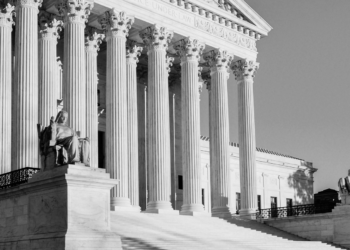Litigation is document driven— the more complex the case, the more voluminous the documents. Presenting a mountain of evidence to judges and juries, however, can pose real challenges when considering time constraints and even shorter attention spans. Fortunately, the rules of evidence provide litigators with a useful tool to overcome these hurdles. Texas Rule of Evidence 1006 allows parties to use summaries, charts, and calculations to prove the content of voluminous writings, recordings, or photographs that cannot be conveniently examined in court, and which are otherwise admissible.
Below are a few examples of cases where summaries have been used to prove up voluminous records:
- Invoices from approximately three dozen subcontractors to prove construction costs. See Duncan Dev., Inc. v. Haney, 634 S.W.2d 811, 812-13 (Tex. 1982).
- Telephone call logs and bills. See Johnson v. State, 208 S.W.3d 478, 507-10 (Tex. Crim. App. 2006).
- Damages in an attorney-fee splitting case. See Shaw v. Lemon, 427 S.W.3d 536, 544-45 (Tex. App.— Dallas 2014, pet. denied).
- Capital improvement expenses. See Moroch v. Collins, 174 S.W.3d 849, 865 (Tex. App.—Dallas 2005, pet. denied).
- A divorcing couple’s accounting records. See Welder v. Welder, 794 S.W.2d 420, 429 (Tex. App.—Corpus Christi 1990, no writ).
For a summary to be admissible under Rule 1006, the underlying records must: (1) be voluminous; (2) have been made available to the opponent for a reasonable period of time to afford inspection and an opportunity for cross-examination; and (3) be admissible. See Harpst v. Fleming, 566 S.W.3d 898, 908-09 (Tex. App.—Houston [14th Dist.] 2018, no pet.).
The first step in determining whether you can use a Rule 1006 summary is to assess whether you are dealing with “voluminous” evidence. Whether evidence is considered voluminous under Rule 1006 depends on the particular facts of the case. At least one court held that as few as 87 pages of data was sufficiently voluminous for Rule 1006 to apply. See CM Asfahl Agency v. Tensor Inc., 135 S.W.3d 768, 800 (Tex. App.—Houston [1st Dist.] 2004, no pet.).
Be sure to provide your opponent the opportunity to inspect the underlying documents you intend to summarize. Often this requirement is satisfied if the documents have been produced during discovery. If the underlying documents have not already been produced in discovery, be sure to provide your opponent sufficient time to inspect the documents before trial, otherwise you will risk an objection and the court could exclude your summary. See Tex. R. Evid. 1006; Shaw, 427 S.W.3d at 544-45 (noting that the underlying records must be made available for the opponent’s inspection, but not the summary itself).
Finally, ensure that the underlying documents are admissible and that the summary is accurate. Harpst, 566 S.W.3d at 909. While Rule 1006 explicitly requires the underlying documents to be admissible, at least one court has noted that Rule 1006 does not require that they be admitted. Moroch, 174 S.W.3d at 865. Rule 1006 also does not require the person who prepared the summary to sponsor it, but courts have recognized the difficulty of authenticating and establishing a summary’s accuracy without the person who prepared it. See Harpst, 566 S.W.3d at 909 n.8.
Rule 1006’s broad application gives attorneys the opportunity to creatively and persuasively use summaries in presenting their evidence. The example at the top of this page illustrates one of many possible ways to use Rule 1006 to summarize years of data into a simple, yet effective, presentation of voluminous evidence.
The next time you are dealing with voluminous evidence, consider simplifying your evidence by summarizing it under Rule 1006. If you do it correctly, the judge and jury will likely thank you! Santos Vargas










